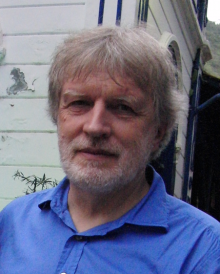Grammatical Structures in Animal Communication and the Evolution of Language

Didier Demolin
Laboratoire Phonétique & Phonologie (UMR 7018), Paris - didier.demolin@univ-paris3.fr
(Seminar in English)
Comparative animal studies represent an approach to understand the evolution of phonological and syntactic features of human language. Phonology, where words are made from meaningless sounds, is considered a simpler level of combination when compared to syntax. Sound combination in animal communication raises important questions about the relevance of grammatical structures in animal communication. Recent findings in ape and monkey vocalizations showed the presence of syntactic features and therefore of grammatical structures. This is also true for several bird species. These findings open speculations about the presence, at least for apes and monkeys, of semantics in their vocalizations. They also lead us to know what is the best way to formalize these systems. The recent findings in monkey’s and bird’s systems lead us to question the uniqueness of human language among primate systems of communication in exhibiting syntax and recursion. The capacity to produce recursive, self-embedded grammars is therefore not uniquely human. These findings suggest that some essential mental processes that make human language are shared with other species.
Recent publications:
Demolin, D. (2015). Insights from the field. In M. Redford (ed.). The Handbook of speech production. Oxford. Wiley Blackwell. 477-504.
Demolin, D. & Hassid, S. (2012). Comparative histological data between the vocal folds of humans and bonobo. Evolution of Language. New-York, World Scientific. 428-429.
Demolin, D. (2008). The Frame/content Theory and the emergence of consonants. In: Zjado, K. & Davis, B. (Eds.) The syllable in Speech Production. Oxford: Laurence Earlbaum. 93-110.
Contact: Melissa Barkat-Defradas; melissa.barkat-defradas@univ-montp2.fr
Contact du Comité SEEM: seem@services.cnrs.fr. Contact du Labex CEMEB: gestion.cemeb@univ-montp2.fr


